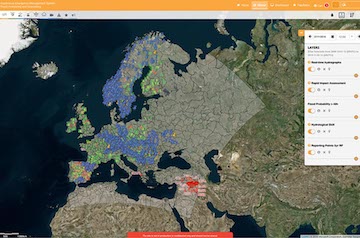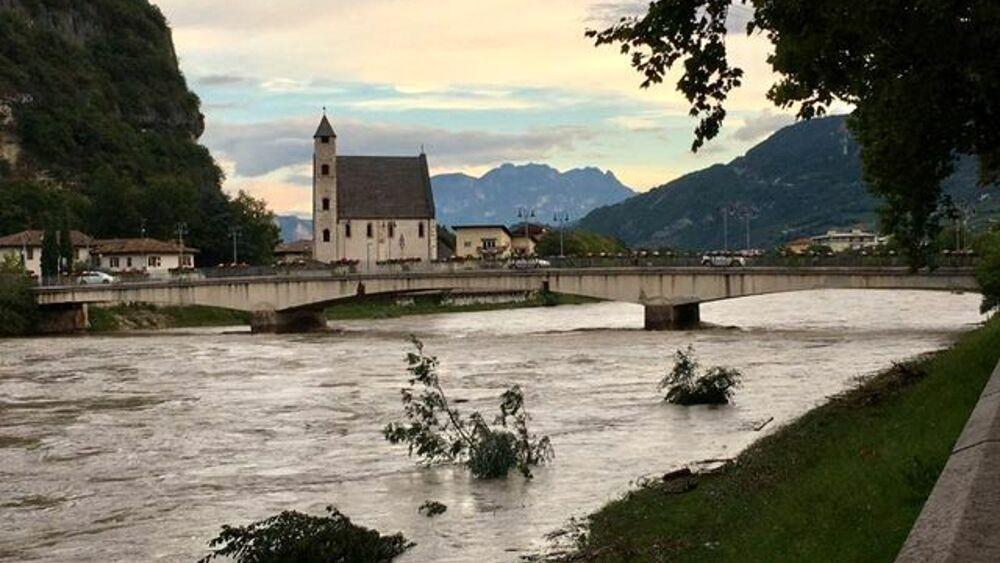
The Adige catchment
The Adige is the second longest river in Italy, after the Po, and the third largest Italian catchment after Po and Tiber rivers. It flows in the Northern part of Italy, collecting water from Alpine streams upstream of the cities of Bolzano and Trento, crossing the city of Verona and finally flowing to the Adriatic Sea.
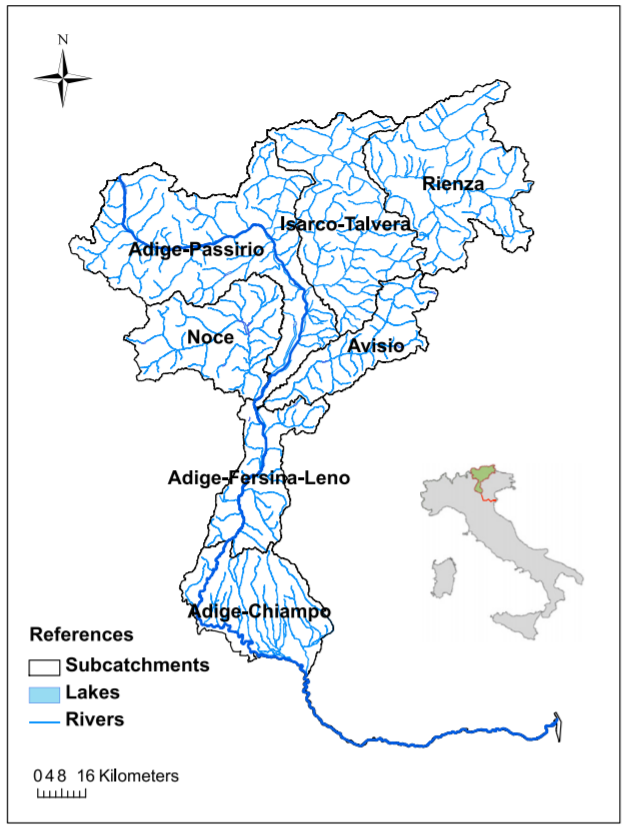
The flood event of the 29th- 31st August 2020
Between the 29 and 30 August 2020, northern Italy experienced heavy rainfall that lead to severe flash floods and riverine floods in many areas, with associated increased landslide risk in some places. The Adige catchment was severely hit. The river and one of its main affluents, the Isarco, burst their banks and flooded large areas. More than 600 inhabitants were evacuated from their homes in Egna, and people were told to flee to higher storeys of their buildings. The most affected area was the Adige valley between the cities of Bolzano and Trento, where water caused the temporary closure of the highway and the railroad between Italy and Austria.
The flood peak was recorded at the gauging station of Bronzolo (Bolzano) in the afternoon of 30 August 2020, marking one of the highest peaks in the last 30 years with ~1350 m3/s.

EFAS version 4.0 forecasts
The European Flood Awareness System (EFAS) version 4.0 had already entered its testing phase when the event struck the Adige catchment and the team at EFAS Forecast Computational Centre got the chance to observe results from the new system.
The first signal of the upcoming event was captured by EFAS v4.0 as early as 7 days before the flood peak, in the forecast from the 00 UTC run on the 23 August, when a 2-year return period reporting point appeared at Bronzolo (Bolzano) river gauge. A 5-year return period reporting point appeared at the same station the day after, in EFAS v4.0 forecast from the 12 UTC run on the 24 August.

In EFAS v4.0 forecast from the 12 UTC run on the 28 August, 48 hours before the flood peak in Bronzolo, the flood signal was clearly indicating 30th August as the most probable day for the flood peak. The new 6-hourly forecast overview tables were also clearly showing the timing of the peak using the new sub-daily time scale.
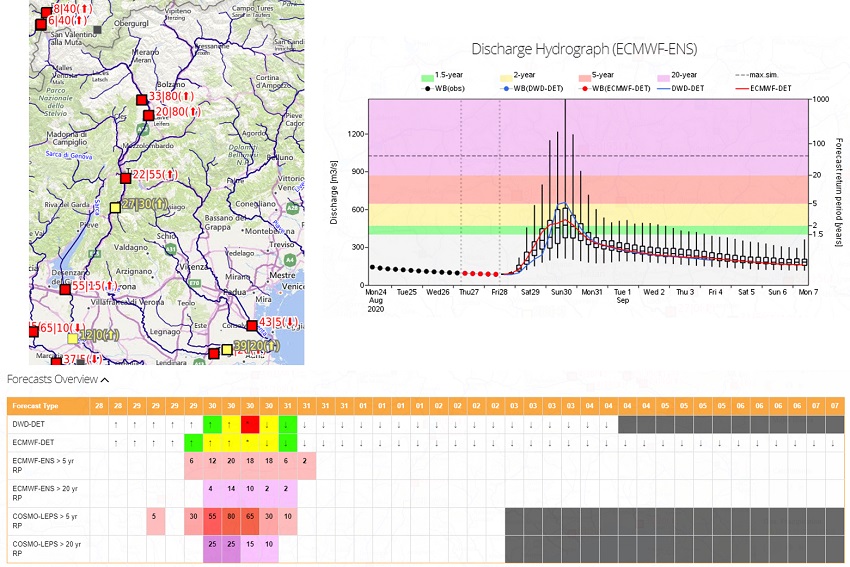
A few days later, on 1 September, when maps containing observed precipitation and air temperature were ingested in LISFLOOD, the hydrological model produced a hydrograph whose magnitude and timing were consistent with observations at Bronzolo station.
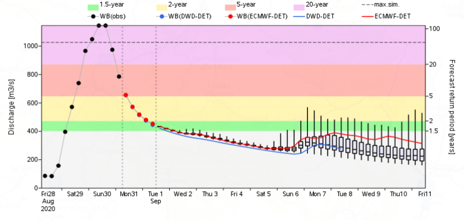
What’s next?
EFAS version 4.0 was implemented as the operational system of EFAS the 14 October 2020. The forecasts produced for the Adige floods of the end of August 2020 are very encouraging, but of course, the team of the Computational Forecast Centre will continue to closely monitor forecasts and assess the modelling performance. EFAS partners are encouraged to also monitor EFAS forecasts in their region and to inform the EFAS centres how EFAS v4.0 performs locally.
